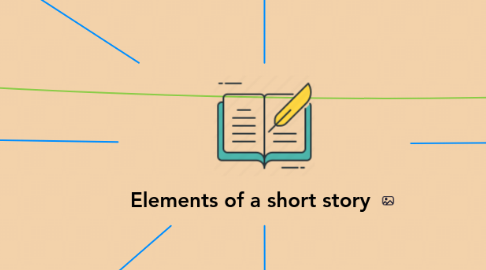
1. SETTING
1.1. It is the time and location in which a story takes place
1.1.1. Place (Geographical Location)
1.1.2. Time (historical period, time of day, year)
1.1.3. Weather conditions (Is it rainy, sunny, stormy, etc.?)
1.1.4. Social conditions (character's daily life and dress, mannerisms, customs, etc.)
1.1.5. Atmosphere (feeling)
2. CHARACTERS
2.1. -The person in a work of fiction
2.1.1. Protagonist – this character is clearly central to the story with all major events having some importance to this character.
2.1.2. Antagonist – this character is the opposer of the main character.
2.2. Characterization
2.2.1. Direct characterization: – writer tells what the character is like.
2.2.2. Indirect Characterization – the writer tells what a character is like by telling what the character does and says.
2.3. Characters can be:
2.3.1. Individual – round, many sided and complex personalities.
2.3.2. Developing – dynamic, many sided personalities that change, for better or worse, by the end of the story.
2.3.3. Static – Stereotype, have one or two characteristics that never change and are emphasized e.g. brilliant detective, drunk, etc.
3. CONFLICTS
3.1. It is the opposition of forces which ties one incident to another and makes the plot move.
3.1.1. External - A struggle with a force outside one's self.
3.1.2. Internal – A struggle within one’s self; a person must make some decision, overcome pain, etc.
3.2. Moreover, conflict is essential to the plot. Without conflict there is no plot.
3.3. Conflict can also occur in the following situations (Sub-Conflict):
3.3.1. Man vs. Man (physical)
3.3.2. Man vs. Circumstances (classical)
3.3.3. Man vs. Society (social)
3.3.4. Person vs. Himself / Herself
4. THEME
4.1. The theme in a piece of fiction is its controlling idea or its central insight.
4.2. It is the author's underlying meaning or main idea that he/she is trying to convey.
4.2.1. The author may use various figures of speech to emphasize his theme, such as: symbol, allusion, simile, metaphor, hyperbole, or irony.
4.2.2. A theme can be expressed in one or two simple statements about human beings and/or life.
4.2.2.1. Example: Don’t judge a book by its cover.
5. What is a short story?
5.1. It is a short piece of fiction aiming at unity of characterization, theme and effect.
6. PLOT
6.1. It is the sequence of events in a story or play.
6.1.1. Exposition – The beginning of the story where the characters and the setting is revealed.
6.1.2. Rising Action – This is where the events in the story become complicated and the conflict in the story is revealed (events between the introduction and climax).
6.1.3. Climax – This is the highest point of interest and the turning point of the story.
6.1.4. Falling Action – The events and complications begin to resolve themselves.
6.1.5. Resolution / Denouement – This is the final outcome or untangling of events in the story.

